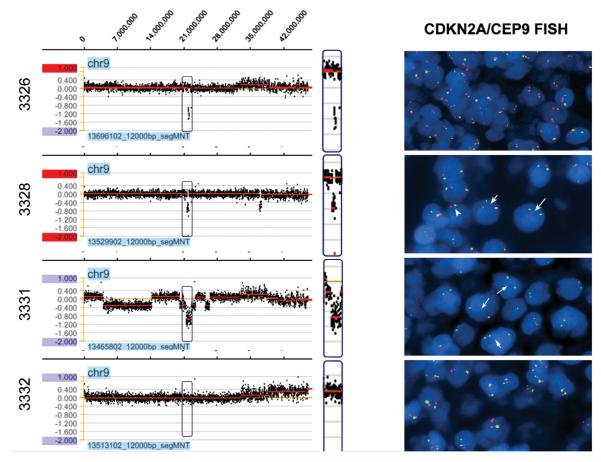Figure 1.
a. Detection of CDKN2A and CDKN2B deletions at 9p21.3, 21.97-22.04 in three of four chemoresistant cases (3326, 3328, and 3331) using the NimbleGen Human CGH 2.1M Whole-Genome Tiling v2.0D Array. Cases 3326 and 3331 appear to have a homozygous deletion. Figure 1b. Representative CDKN2A/CEP9 FISH images of all chemoresistant DLBCL cases. Case 3326 reveals normal CDKN2A/CEP9 signals, likely due to a microdeletion (~130 kb) which was not detected by the probe. Case 3328 reveals hemizygous (short arrow) and, to a lesser extent, homozygous (long arrow) deletions, as well as monosomy 9 (arrowhead). Case 3331 is significant for a homozygous deletion in diploid (long arrows) and polysomy 9 (short arrow) tumor cells. Case 3332 reveals a normal signal pattern. All 4 cases in the chemo-responsive group showed a normal two orange/two green signal pattern (data not shown).

